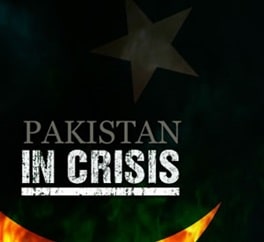Sometimes a tragic event happens that touches every member of a community. People experience shock, fear, and anxiety. Natural disasters result in economic loss, relocation, health problems, and mental health issues.
Same is the case due to recent flood in August 2010 in Pakistan, which is termed as the country’s worst humanitarian disaster. The 2010 monsoon flood disaster in Pakistan has been massive and unprecedented, killing more than 1,700 persons, affecting over 20 percent of the land area, more than 14 million people, and causing billions of dollars in losses and damages to infrastructure, housing, agriculture and livestock, and other family assets. Essential infrastructure including roads, bridges and markets has been severely damaged and many remain impassable. (Pakistan Flood Impact Assessment)
People were left homeless as the flood destroyed their homes, villages and livelihood. Many were left without proper food, shelter and medical care. People had taken refuge in schools, on the highways and other high ground.
This flood caused huge scale destruction in certain regions of Pakistan, including KPK, Balochistan, flatter areas of Southern Punjab and Sindh. KOT ADDU (in Southern Punjab) is on of the worst hit areas of the Punjab province. Water reached at height of more than 10 feet that uprooted trees, destroyed property, buildings and bridges. The floodwater was contaminated with mud and gravel and becoming responsible for further problems.
Various problems after the flood included loss of life and property, damage to infrastructure, impact on livelihoods, feeling of uncertainty, variation in response and recovery efforts, inequities in relief aid, tents and temporary shelters, and long-term rehabilitation planning. The damage estimates were in billions of dollars. This flood also aroused many social, emotional, and educational problems.
This report is based on KAP survey (a survey with highly focused evaluations that measure changes in human knowledge, attitudes and practices in response to a specific intervention). It aimed at investigating the certain issues like the knowledge of people about the hazard like flood or what is mainly responsible for its existence, attitude of people (after the occurrence of flood) towards the planning or rehabilitation steps for dealing with such kind of problem caused by the flood and the practices, which they adopted or would adopt in future for coping with disaster like that. For the nature of project, purposive sampling was used as sampling technique. As it was not known that how many respondents were able to understand the questionnaire and what was the literacy rate at there, interview schedule was used as tool of collection of information. A large number of respondents were asked questions to get diverse information regarding the issues. After collecting a bulk of information, the results indicated the existence of certain kind of issues which were hidden before.
It was observed that approximately all the respondents were aware about the fact that there village was exposed to or affected by the flood. Majority of the respondents told that heavy rainfall became responsible for the occurrence of that disaster. Some of them told that the main reason for this flood was the hand made temporary river hedges. These were of low strength and the breakage of such river hedges became responsible for the flood. The key elements which were at risk include lands, crops, children, old people, houses, pet animals, households etc. While telling about the reasons of vulnerability of such elements at risk, respondents said that they were not ready for facing such kind of disaster because they were not pre-alarmed about that. Some also said that they were unable to adopt any alternate way due to insufficient opportunities.
There was unavailability of Community Early Warning System Forecasting. Instead of Television and radio, they did not have any kind of community early warning system. Mainly, there was not any physical sign which could indicate that flood is coming. But some people could guess it from the heavy rainfall and increasing level of water in river. There was not any evacuation strategy for coping with emergency. People might not discuss with each other about the evacuation from such kind of emergencies because they were not aware about that. But when there was flood, they decided to go to the place like school or mosques to get shelter as these places were considered safe as they were well built and cemented and have higher grounds as compared to other places in villages. Some people stepped up to their roofs by considering it safe haven in such disaster. But from the community side there is not any specified shelter place in case of such emergency.
From the native point of view, it was observed that there was not any emergency plan from community side or from any other alternative way. People had to help themselves at their own, in case of emergencies. If there might be existence of any emergency plan from community side or any other authenticated way, people would not suffer from such kind risk or they would be able to minimize the unprecedented affects of such disasters.
There was not any kind of familiarization with prevention and mitigation measures to avoid the risk from floods or cyclone. If they were aware with prevention and mitigation measures to avoid risk from floods and cyclones, they might adopt that. But after the occurrence of flood, people are interested in getting aware with certain measures that should be taken in future for coping with such kind of disasters. As man learned from experiences, people had also learned some strategies, which they would adopt in future for dealing with such problems. According to native point of view, if people would experience any disaster in the future, the preventive measures of ensuring safety in future would be well structured and cemented houses, up grounded level of houses and availability of emergency shelter at community level. Migration would also be a preventive measure for ensuring safety. Emergency alarming system for making people pre-aware about any kind of disaster would also be a way of ensuing safety.
Before the coming of flood people were not trained to carry out specific warning or response tasks for their community in case of an emergency. There was not any kind of training system for helping people in case of emergency. People were not trained in first aid i.e. they did not know how to act in case of injury or other emergency situation.
The things that people could think of to do before a flood / cyclone to make them and their family safe are to stop deforestation and plant more trees, to listen to Flood / Cyclone forecast from the media or other reliable sources, to follow instructions issued by the government/local authorities, to tell the neighbors, to watch out for rapidly rising water and alert the villagers for evacuation and to move immediately to the nearest emergency shelter along with family members, respectively. These were the precautions which would be taken by the people to minimize the risks of flood or any other disaster.
In case if there might be a flood in future, the things which people would adopted to do during a flood / cyclone to make sure them and their family safe are to help rescue and first-aid if possible, to remain calm & quiet and cope with the situation, to remind villagers not to cross flowing river water unless they are assured that the water is below knee height and to turn off the electricity, as per response respectively.
In future, the things about people could think of to do after a flood / cyclone to make sure them and their family safe are to go back home only when authorities declare that the situation is safe, to clean up flooded areas, to start reconstruction and livelihoods activities and would use Mosquito nets as preventive measure to avoid mosquito bite.
Thus by summarizing the whole responses of people, belonging to Kot Addu, we can say that although people were aware that their village was on worst hit by the flood but they were without the knowledge of coping with disaster like flood. Their attitude toward the flood was unconscious one, due to which they bear a massive loss of lives, money, livestock etc. They did not have any kind of preventive measure for dealing with such kind of problem. But it seems that they might be ambitious to cope with such kind of disaster in future as they learned from this worst experience. But they are still looking for some one who can support them and trained them for coping with disasters like that. Without help of any authenticated source, it might not be possible for them to become helpful for themselves.
muhammad azam
Top Contributors
Related Articles
From Curiosity to Career A Purpose-Driven Journey Through the 4D Growth Framework
- Ilmkidunya
- 10/Jun/2025




.gif)







































